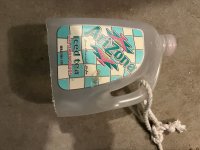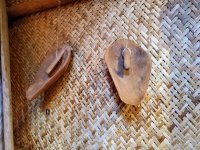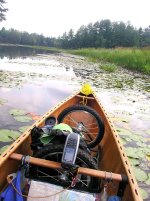These are my bailing scoops, medium sized bleach bottles. The handles have a squirt of foam in them so they don't sink
They work good but are rather ragged looking. Which is mostly ok with me, but appearances matter.
I haven't seen many options, at least beyond the flexible plastic ones is see when I Google bailing scoop.
Does anyone have a more respectable bailing scoop they really like?
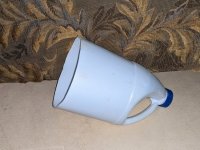
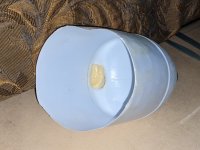
They work good but are rather ragged looking. Which is mostly ok with me, but appearances matter.
I haven't seen many options, at least beyond the flexible plastic ones is see when I Google bailing scoop.
Does anyone have a more respectable bailing scoop they really like?



